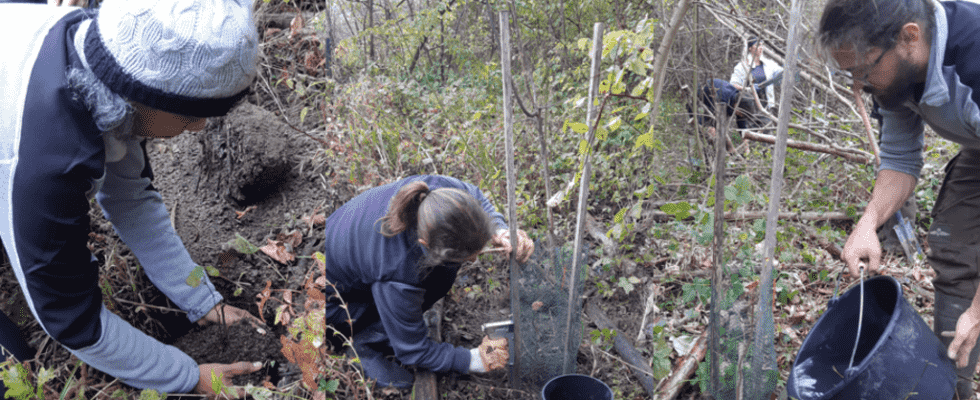An ancestor of the cultivated vine, the wild vine is the only one native to Europe and risks disappearing as man intervenes on the banks of the Seine and dries them up. The National Botanical Conservatory of the Paris basin has decided to replant a hundred plants in a nature reserve in Seine-et-Marne, to strengthen the population.
The wild vine gives smaller and more bitter grapes than those of its descendant, the cultivated vine. Protected by law since 1995, it is still threatened with extinction in Île-de-France. Blame it on human activities that attack its natural environment: sparse forests on the banks of rivers where it likes to regularly have its feet in the water, like here near the Seine.
This is explained by Philippe Bardin, from the Botanical Conservatory of the Paris Basin: ” The wild vine is threatened by human activity, like its natural habitat, because the bed of the Seine has been canalized, the flood regime has been modified, agriculture has intensified in La Bassée, and we have also planted poplars, which dry out the natural environment “. Right next to the reserve, a sand and gravel quarry lowers the level of the water table.
► To read also: Financing the preservation of biodiversity in Africa, a major challenge for COP15
A ” wild gene pool to anticipate the effect of global warming
Stakes, protective mesh, watering, local naturalists are busy. For Guillaume Larregle, planting a hundred young wild vines in La Bassée means recreating a bastion of local biodiversity. ” This vine, given that it belongs to its environment, is recognized by insects, local fauna, he explains. These species of fauna, they need local, because that is what they have adapted to for centuries. »
Restoring wild vines also means preserving a reservoir of genes that we will need in the future. ” The cultivated vine has been selected and domesticated for thousands of years with an erosion of genetic diversity. Global warming means that there is an absolute interest in protecting the wild relatives of these cultivated species, to possibly find in this reservoir of wild genes genes of resilience, for the adaptation of cultivated species to global changes. “, underlines the scientist Philippe Bardin.
But for the first results, it will be necessary to wait… While man concretes, channels and clears land at high speed, these young vines will take – for those who will resist the hazards – ten years before making flowers and fruits, and to spread around.
► Also to listen: COP15: the world at the bedside of biodiversity
